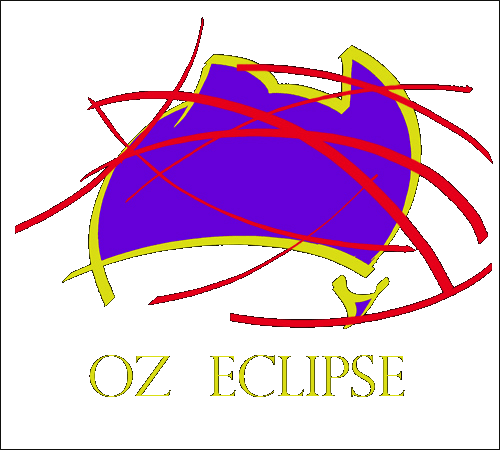
 |
WAITING FOR THE
SHADOW
SOLAR AND LUNAR ECLIPSE OBSERVINGFUTURE EXPEDITION & EVENT PLANNING |
|
|
|
|
|
|
|
|
|
|
Travelling to Australia In this section I will suggest some possible travel plans suitable for people with little time or lots of it. If you are traveling all the way down to Australia, you
may as well aim for the yellow zone. During June, this is the sunniest
part of the country
and, if you believe statistics, one of the sunniest parts of the world
at that time of the year.  Observing Geometry The selection of observing location involves a bit of horse trading between altitude of the Sun at ingress / egress and sunshine. The further west you go, the higher the mean sunshine hours but the lower the altitude at ingress but the higher the altitude at egress. Stay east and its cloudier but the Sun is higher at ingress. The highest travel value locations are the areas around Darwin and Cairns. Many observers who come to Australia for the transit would also want to return 5 months later for the total solar eclipse in Cairns. Therefore, the logical choice is to head for Darwin and south to Katherine for the transit.
*Katherine and Darwin are in the Northern Territory Time Zone UT+9.5HR. All other locations in Queensland Time Zone UT+10HR Predictions courtesy http://www.transitofvenus.nl/details.html by Steven Van Roode Once you've selected a site, goto Steven's website and do a details calculation for your location. the site gives you all the contact times, position angles, and event altitudes for a specific location. He also provides a great deal of background information on transits which I am making no attempt to reproduce here
I have only listed the interior ingress egress times, the times of the famous black drop effect. In the east near Cairns, %sunshine is lower but ingress altitude is much higher than Katherine. But at Katherine, ingress altitude is at a respectable 13 degrees and egress is at a whopping 48 degrees. In the east, the Sun's altitude is on the decrease by the time of internal egress. The situation near Katherine could be considered an advantage having the Sun nearer the horizon for one contact and high in the sky for the other. Were I to fly in from overseas, I'd definitely fly into Darwin, rent a car and head south to Katherine
Flying in Darwin Cairns Cairns has a population of 100000 but has a significant tourist infrastructure. They accommodate up to 50000 tourists in high season (June-August). See the total solar eclipse in Cairns page for more information about Cairns.
Driving from Southern Australia From the eastern states, Winton seems like a good compromise between minimizing unnecessary driving and improving weather prospects and observing geometry. If you are coming from Sydney Canberra or Melbourne, take the Mitchell Highway out through Bourke to the boarder then up through Charleville to Winton. Leave yourself a couple of days leeway. If it looks like there might be cloud, keep driving through Mt Isa and across to the Northern territory if necessary. From South Australia, head north up the Stuart Highway as far north as you feel like driving. The further north you drive, the better your weather prospects and geometry.
A quick trip flying in from overseas If you are short of time, just fly in to Darwin. Depending how short if time you are, you could just observe from Darwin or take a bus or rent a car and go to Katherine. Watch the transit and go back to Darwin and fly out.
Got more time? If you have time and money, there is a nice circuit from Darwin to Kakadu National Park to Katherine Gorge to Lichfield National Park and back to Darwin. While at Kakadu, make sure you do a cruise on Yellow Waters at sunrise and at sunset. Cruises up Katherine Gorge are also recommended. Lichfield National Park is often described as Kakadu without all the tourists. There are thermal springs at Mataranka Springs, perfect for the rheumatoid transit observer.
More Info : - Katherine Gorge (Nitmiluk National Park). Information about all three parks is available at http://www.environment.gov.au/parks
Info about transits : - NASA Transits page
2012 Transit of Venus
local circumstances calculator
|
BACK TO